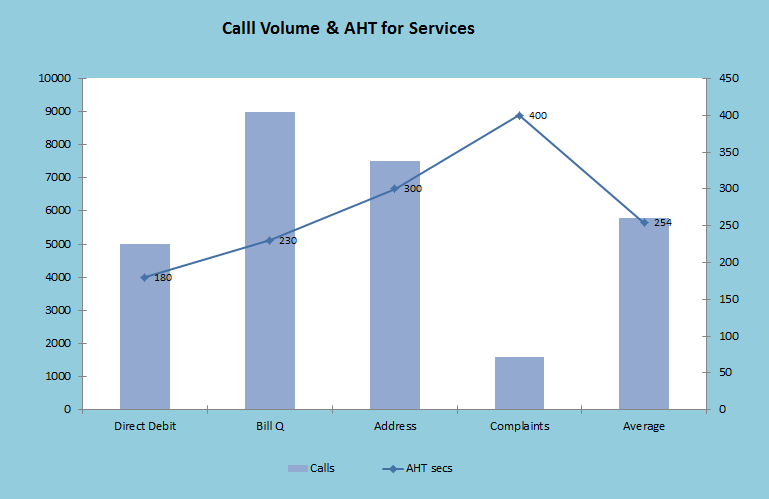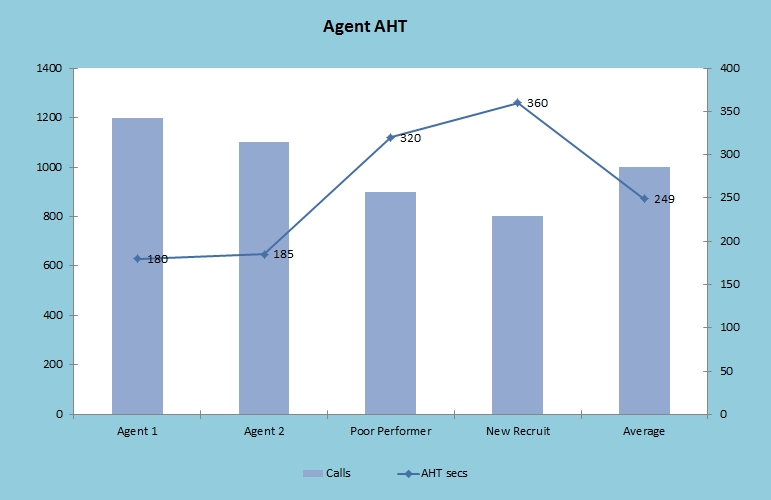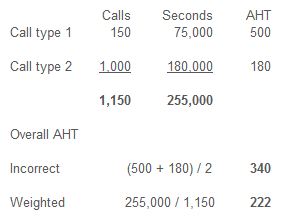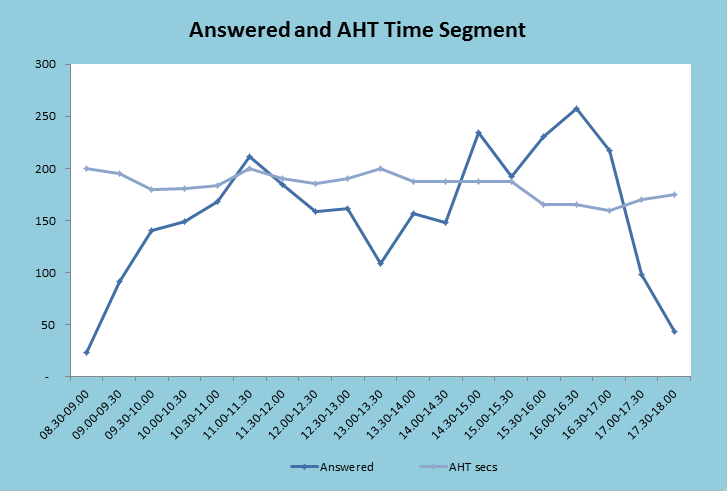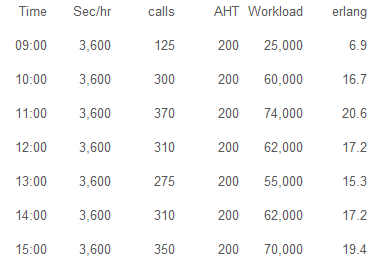Call Forecasting 9 - Establishing Workload and Handling Times
Author: CCa2z
Date: 5th March 2013
Establishing the Workload
In previous steps we understood how to collect and collate usable call volume data and how to convert these into call-arrival percentages. We still need to understand, how from call volume, we can move to and estimate workload (call load).
The call volume, being only one dimension, merely provides us with the quantity of calls, it is now necessary to understand workload, how long it takes to process or handle the volume. To get to workload we will need information on call handling times.
Average Handling Times (AHT)
Handling times for calls need to be understood to complete the workload picture, as resourcing requirements for 100 calls with a 2-minute handling time is quite different from 100 calls with a 4-minute handling time.
The handling time for a call is the sum of the talk time, including any hold time, plus after call wrap time. It is necessary to establish the overall AHT for the total call volume. The AHT will vary by call type and agent;
1. Call Type
- Call type for service – change of address, billing query or complaint
- Call type for product – gas calls may take longer than electric calls
Where resourcing takes place by group, the AHT will be required for each group. As we see from the chart, below, each call type has it’s own AHT with an overall AHT for all call types.
There are a few of ways to determine the AHT for call types;
- Through the use of ACD Agent Groups, which can be based on skills groups by product or service.
- Using Dialled Number Identification Service (DNIS), the ACD can identify the number dialled by the caller.
- IVR menus will identify the selection made by the caller, which will generally be by service or product.
- CRM systems, which are integrated with the ACD, allow calls to be tracked by call type.
We will have an AHT for each call type and an overall AHT for all calls.
2. Agent
- AHT will vary from experienced agent to new recruit
- From top quartile performers to poor performer
The range of AHTs between agents will vary and we will have an AHT for each individual and an overall AHT for all staff.
Weighting
Generally, the overall AHT will be sufficient to work with. It is important when determining an overall AHT to weight by volume. Weighted averages should be used wherever data needs to reflect the relative importance, volume and contribution of each item. It is not sufficient to use the arithmetic mean to average out data.
Below, if we added together the two AHTs and divided by two, we would up with an erroneous figure of 340 instead of the weighted figure of 222.
AHT – By time of Day
AHT varies by time of day. During daily peaks, it can be seen to be lower than when agents are busier and longer when they have more time. AHT can be chartered by intra-day time segment.
Internal Process
AHT can be affected by internal process;
- Call-backs, which are taken at peak times with a follow-up outbound call to the caller, has the effect of adding inbound calls with shortened handling times.
- This does tend to complicate matters, where large numbers of call-backs are made.
- Some contact centres will attempt to add back outbound time to make up for the shortened inbound handling times.
- Some long-tailed call types are passed to back-office teams for investigation and processing.
- Again, these calls are shortened but this is acceptable as long as back-office resourcing, account for the handling time. If not, time will need to be captured – but such manual approaches should be avoided.
Summary AHT
A summary AHT will be the overall figure that will be used to determine workload and will be the average from all calls received, unless specialised skills groups exist.
The AHT of all call types is the same as the AHT by all agents but just a different dimension to the data.
Reporting
Very much like incoming volumes, AHT will be chartered by all reporting periods.
The ACD will report by Agent Group / Incoming Call Duration / Agent Analysis reports and will include handling time durations. These reports will be by period – day to intra-day time segment.
It is important that agents display the appropriate adherence to work modes to ensure that after call work is correctly picked up and is not undertaken in not-ready work modes.
Workload
Understanding workload is the output from this step of AHT analysis;
- How many calls
- How long does it take to process them
The workload for one hour is referred to as one erlang
Workload = calls in 1 hour x AHT (secs)
Following the table below, between 09:00-10:00, we have 6.9 erlang hours of workload;
- 125 calls x 200 sec AHT = 25,000 secs of workload
- 25,000 secs of workload divided by seconds available in one hour, 3,600
- Equals 6.9 erlangs
It is a mistake to view the erlang hours of workload as equalling the staff hours required to handle the call volume. These tables are used in many call centres as a guide to track real-time performance. However, we have not yet specified how quickly we would like to handle the calls - through service level.
Call Forecasting 8 - intra-Day Percentage Tables
